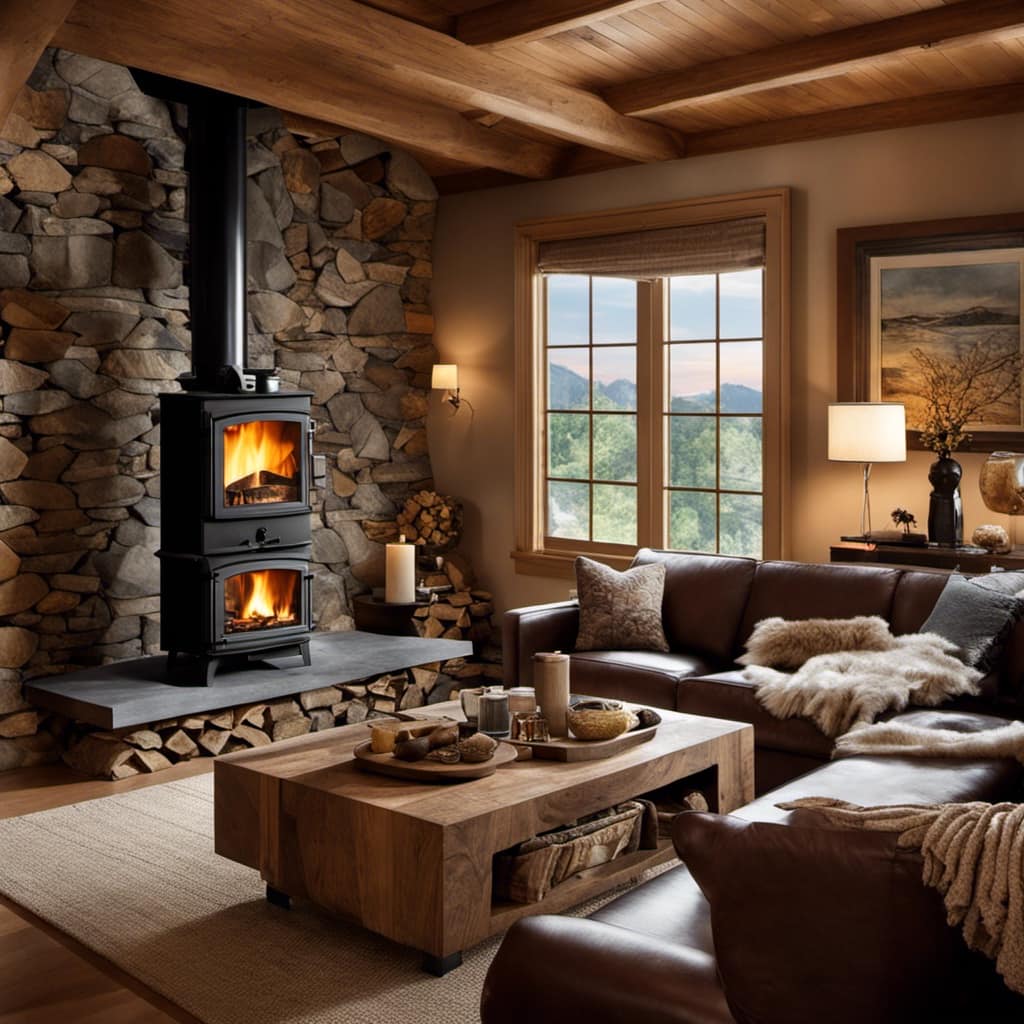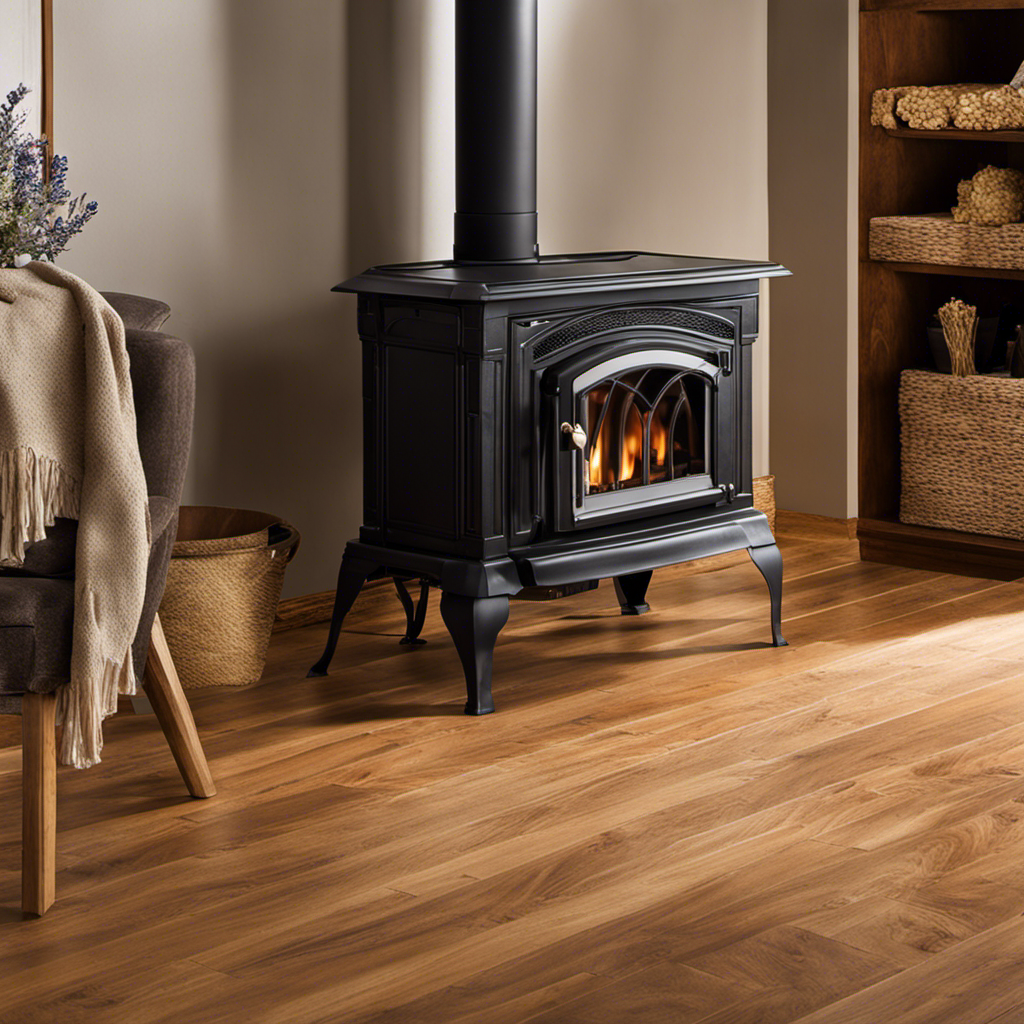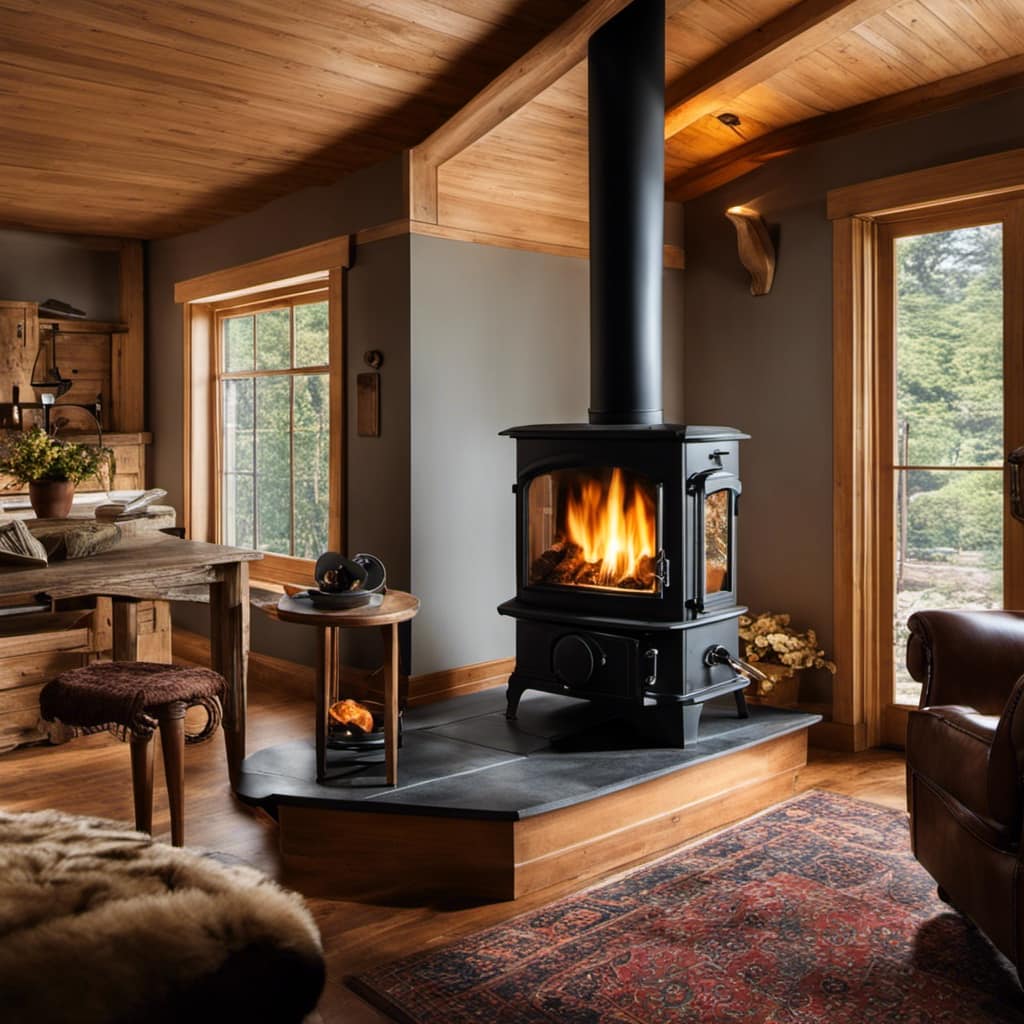Picture your wood stove acting as the cozy and inviting centerpiece of your home, providing comforting heat on cold days. However, what if this welcoming atmosphere is disturbed by a room filled with smoke? Do not worry!
In this guide, I’ll show you how to open the flue on your wood stove, ensuring proper ventilation and preventing smoke from invading your space. By following these step-by-step instructions, you’ll be able to enjoy the crackling fire without any unwanted side effects.
Let’s get started!
Key Takeaways
- The flue is a crucial component of a wood stove that allows combustion byproducts to exit.
- Regular cleaning and maintenance of the flue is necessary to prevent buildup and ensure safe operation.
- Proper ventilation and draft are essential for efficient combustion and to prevent blockages and smoke backup.
- Consult a professional for draft issues and hire a chimney sweep for thorough cleaning and maintenance.
Understanding the Flue: A Quick Overview
I’ve learned that the flue is an important component of a wood stove. It plays a crucial role in ensuring the efficient and safe operation of the stove. The flue is essentially a pipe that allows the combustion byproducts, such as smoke and gases, to exit the stove and be vented outside. It also helps create a draft, which is the flow of air through the stove that aids in the combustion process.
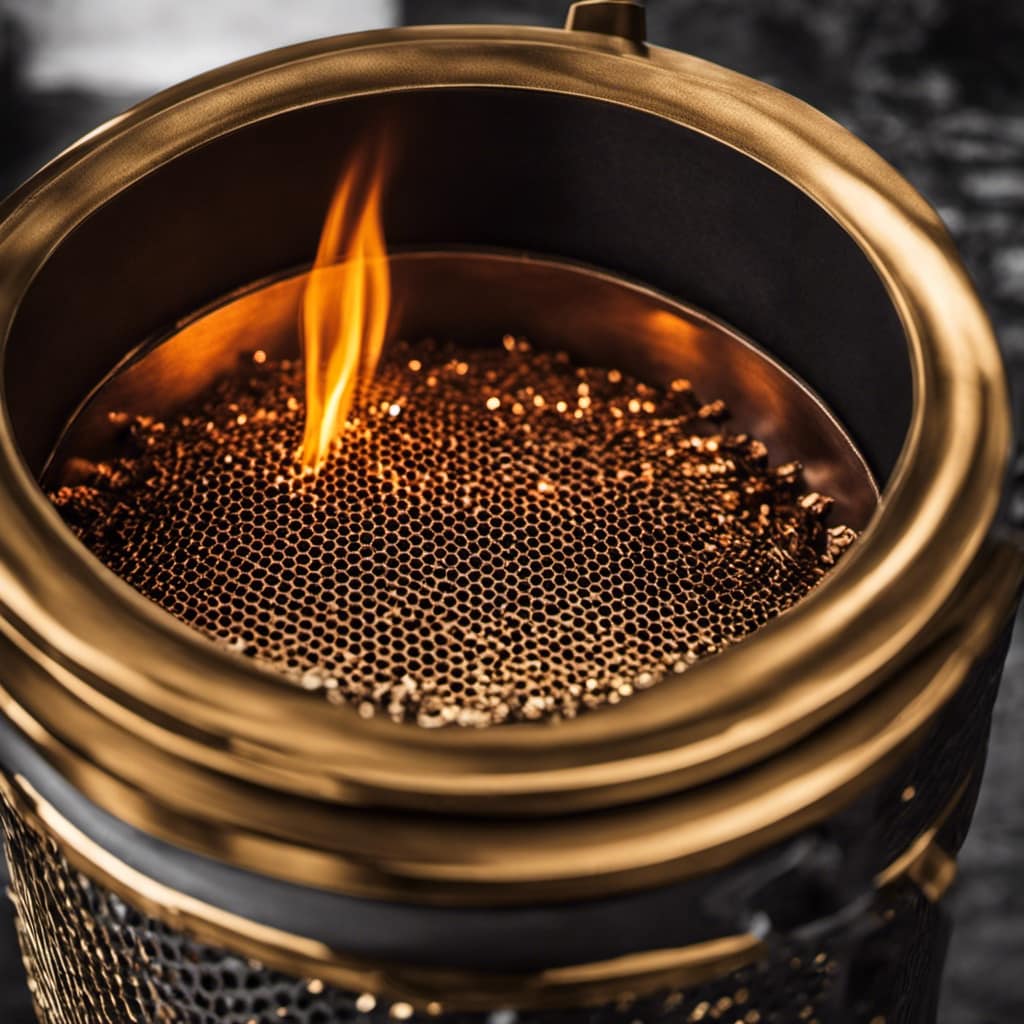
To maintain the proper functioning of the flue, regular cleaning is necessary. Over time, creosote and soot can build up inside the flue, which can restrict airflow and increase the risk of a chimney fire. Flue cleaning should be done at least once a year, preferably before the start of the heating season. It’s recommended to hire a professional chimney sweep for this task, as they have the expertise and specialized equipment to ensure a thorough cleaning.
Another important aspect to consider is the flue draft. The draft refers to the direction and strength of the airflow in the flue. A strong draft is essential for efficient combustion, as it helps pull in fresh air into the stove and expels the combustion byproducts. A weak or negative draft can cause smoke to enter the room, leading to poor heating efficiency and potential health hazards. If you notice issues with the draft, such as excessive smoke or difficulty in starting or maintaining a fire, it’s advisable to consult a professional to assess and correct the problem.
Safety Precautions Before Opening the Flue
Before using the wood stove, it’s important to make sure all safety precautions are taken into consideration. Safety should always be the top priority when operating any type of heating appliance.
Here are three important safety measures to keep in mind before opening the flue on a wood stove:
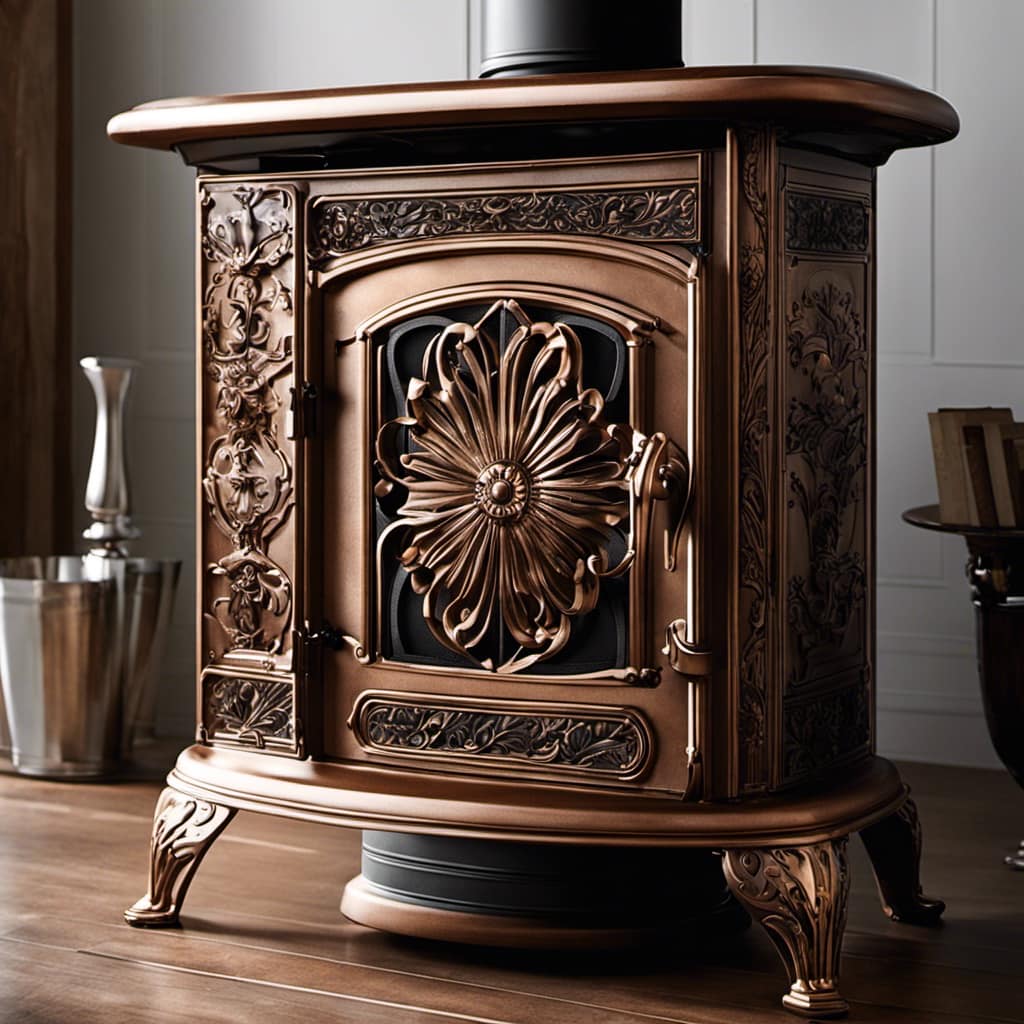
Clearing Chimney Blockage: It’s crucial to regularly inspect and clear any blockages in the chimney. Over time, creosote and debris can accumulate, obstructing the flow of smoke and gases. This can lead to poor ventilation and increase the risk of a chimney fire. A professional chimney sweep can help remove any blockages and ensure proper airflow.
Proper Flue Maintenance: The flue is responsible for directing smoke and gases out of the stove and up the chimney. Before opening the flue, check for any signs of damage or corrosion that could compromise its function. Ensure the damper is fully open and free of debris. Regularly clean and inspect the flue to maintain its efficiency and prevent potential hazards.
Carbon Monoxide Detection: Wood stoves produce carbon monoxide, a colorless and odorless gas. Install carbon monoxide detectors near the stove and throughout your home to alert you of any dangerous levels. Test the detectors regularly and replace batteries as needed to ensure they’re functioning properly.
Locating the Flue Damper: Where to Find It
Located inside the chimney, the flue damper controls the flow of smoke and gases. It’s an essential component of a wood stove, as it helps regulate the temperature and prevents backdrafts. To operate the flue damper, you first need to find the flue handle. This handle is usually located on the outside of the stove, near the top. It’s a lever or a knob that you can easily manipulate to open or close the flue.

When operating the flue damper, it’s important to follow the manufacturer’s instructions. Typically, you’d pull the handle towards you to open the flue and push it away to close it. Opening the flue allows smoke and gases to exit through the chimney, while closing it prevents drafts and helps retain heat within the stove.
Now that you know how to find and operate the flue damper, the next step is to check for proper air flow. Is the flue blocked? This is crucial to ensure the efficient functioning of your wood stove. In the next section, we’ll discuss how to inspect the flue for any obstructions and ensure that the airflow is unimpeded.
Checking for Proper Air Flow: Is the Flue Blocked
When it comes to ensuring proper air flow in your wood stove, it’s crucial to check if the flue is blocked.
A blocked flue can lead to poor combustion, decreased efficiency, and even potential safety hazards.

Flue Obstruction Signs
I can feel a draft coming from the wood stove, indicating a potential obstruction in the flue. When it comes to maintaining your wood stove, proper flue cleaning is essential. Ignoring the signs of a blocked flue can lead to inefficient heating, increased risk of carbon monoxide poisoning, and potential damage to your stove.
Here are three key signs of a flue obstruction to watch out for:
Reduced draft: If you notice a decrease in the amount of air being pulled up the chimney, it could be a sign of a blocked flue. This can lead to poor combustion and a smoky, inefficient fire.
Smoke backup: When the flue is obstructed, smoke may start to back up into your home instead of being properly vented outside. This is a serious safety hazard and should be addressed immediately.
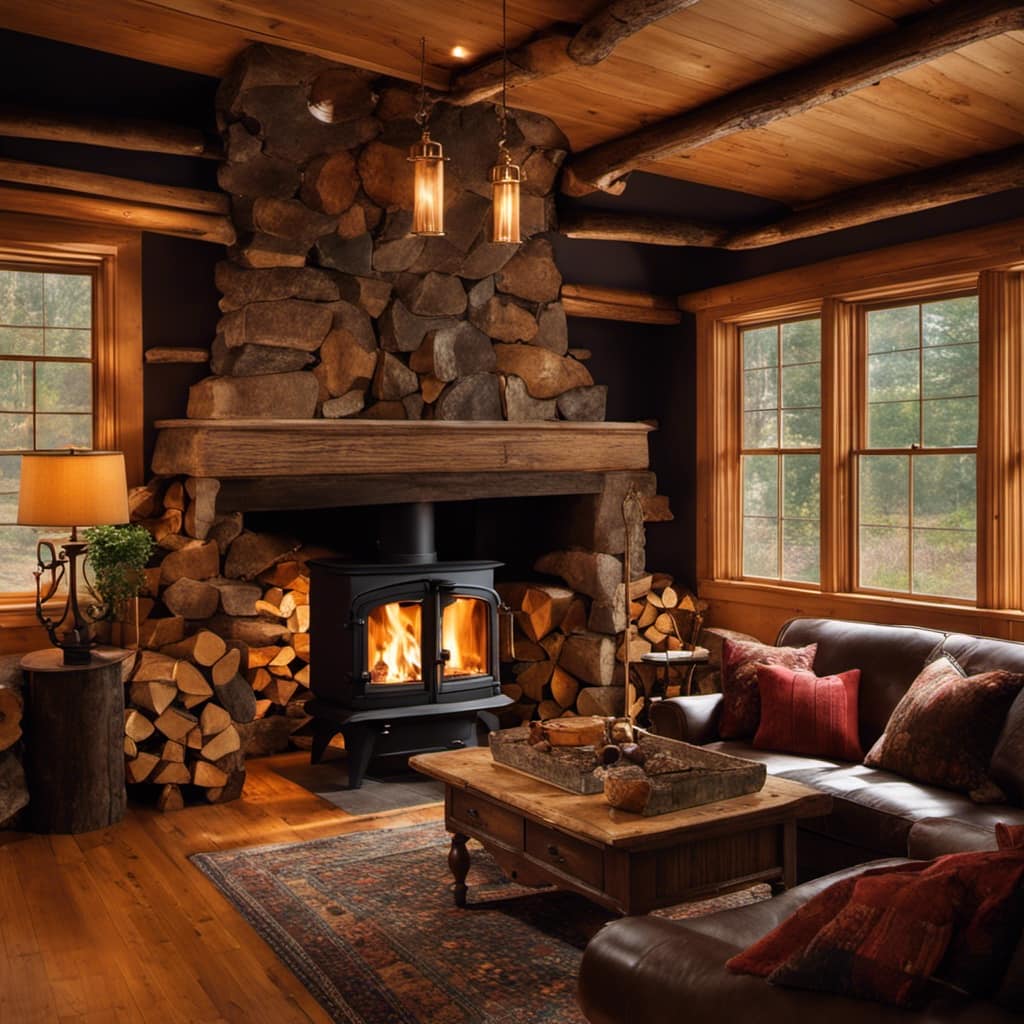
Soot buildup: Excessive soot or creosote deposits on the glass door or chimney walls can indicate a flue blockage. Regular flue maintenance, including cleaning, can help prevent this buildup and ensure proper airflow.
Clearing Chimney Blockage
Clearing the blockage in my chimney is crucial for ensuring proper ventilation and preventing smoke backup into my home. Chimney blockages can occur due to a variety of reasons, including the accumulation of debris such as soot, creosote, and animal nests. These blockages can restrict the flow of air and gases, leading to poor combustion and potential health hazards. To clear the chimney debris, it is important to follow proper safety procedures and use the right tools. Regular chimney maintenance and cleaning can help prevent common flue blockages and ensure the safe operation of your wood stove. Here is a table outlining some common flue blockages and the recommended solutions for clearing them:
| Flue Blockage | Cause | Clearing Method |
|---|---|---|
| Soot and Creosote | Combustion byproducts | Chimney sweep or professional cleaning |
| Animal Nests | Birds, squirrels, or rodents | Remove nest, install chimney cap or screen |
| Debris and Leaves | Outside elements | Chimney sweep, brush, or vacuum |
| Damaged Flue Liner | Wear and tear over time | Repair or replace flue liner |
| Cracked Masonry | Age, weather, or seismic activity | Masonry repair or chimney rebuild |
Importance of Regular Maintenance
Regular maintenance is crucial for ensuring the safe and efficient operation of my chimney and preventing potential hazards. To emphasize the importance of regular cleaning and maintenance, here are three key points to consider:
Decreased efficiency: Over time, soot and creosote can accumulate in the flue, reducing its ability to effectively vent smoke and gases. This can result in poor combustion and decreased heating efficiency.
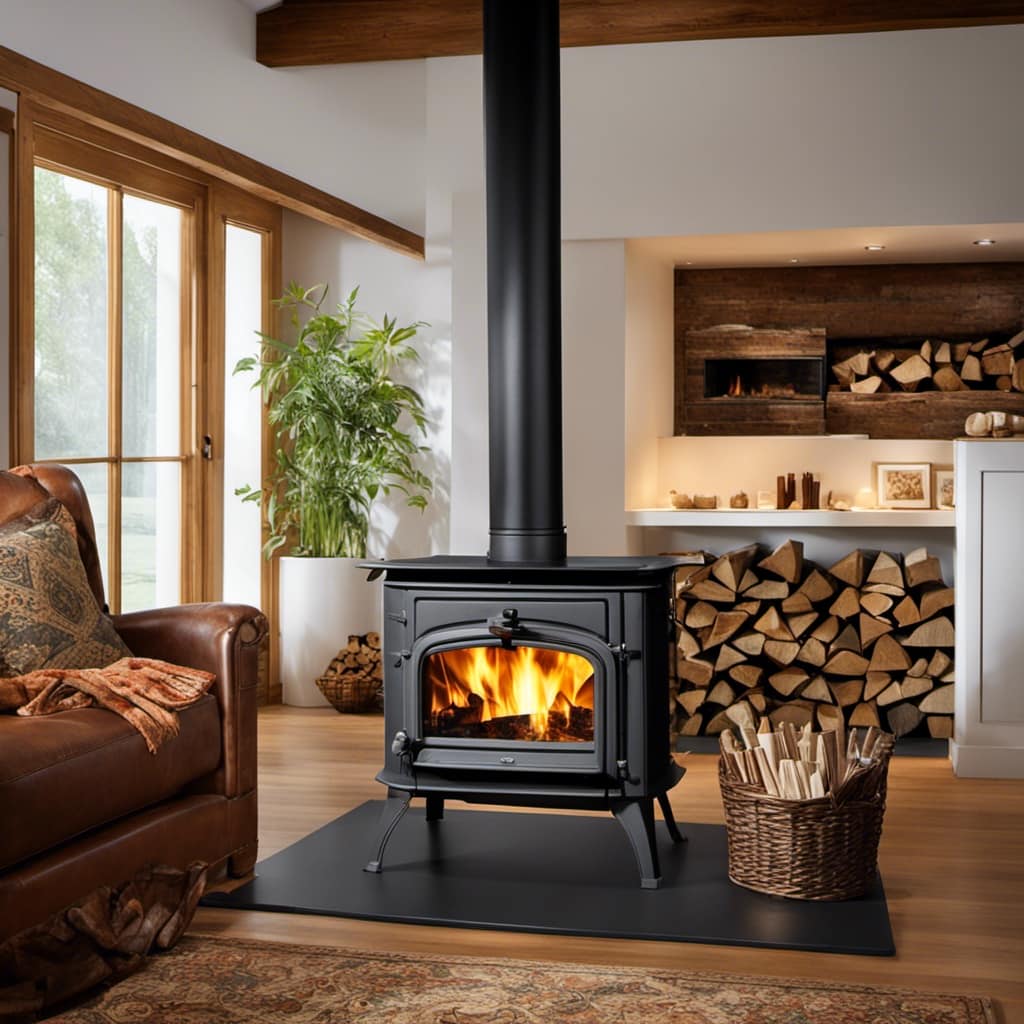
Increased risk of fire: A dirty flue increases the risk of a chimney fire. Soot and creosote are highly flammable, and if they ignite, they can lead to a dangerous and potentially devastating fire.
Carbon monoxide poisoning: A blocked or damaged flue can cause carbon monoxide to enter your living space. This odorless and colorless gas is extremely dangerous and can be fatal if inhaled in high concentrations.
Regular maintenance and cleaning are essential to prevent these issues and ensure the safe operation of your chimney.
Now, let’s move on to step-by-step instructions for opening the flue.
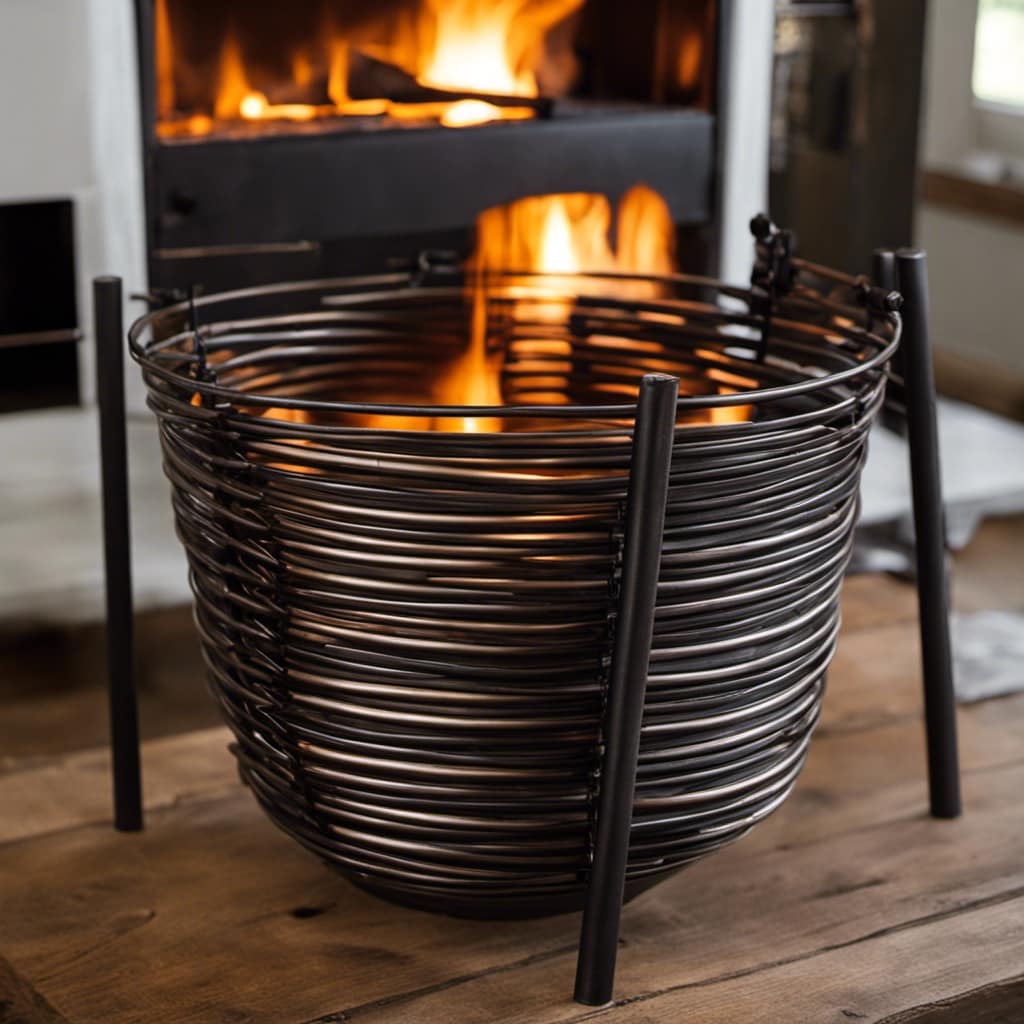
Opening the Flue: Step-by-Step Instructions
Opening the flue is a crucial step in ensuring proper ventilation for a wood stove. To do this, start by locating the flue handle and turning it counterclockwise to open the flue.
Next, carefully observe the chimney to ensure that the flue is fully open, allowing for the safe release of smoke and gases.
Importance of Ventilation
I can’t stress enough how crucial proper ventilation is when operating a wood stove. It isn’t just about keeping the air clean; it’s also about ensuring your safety and maximizing the efficiency of your stove.
Here are three key benefits of ventilation and some techniques to achieve it:
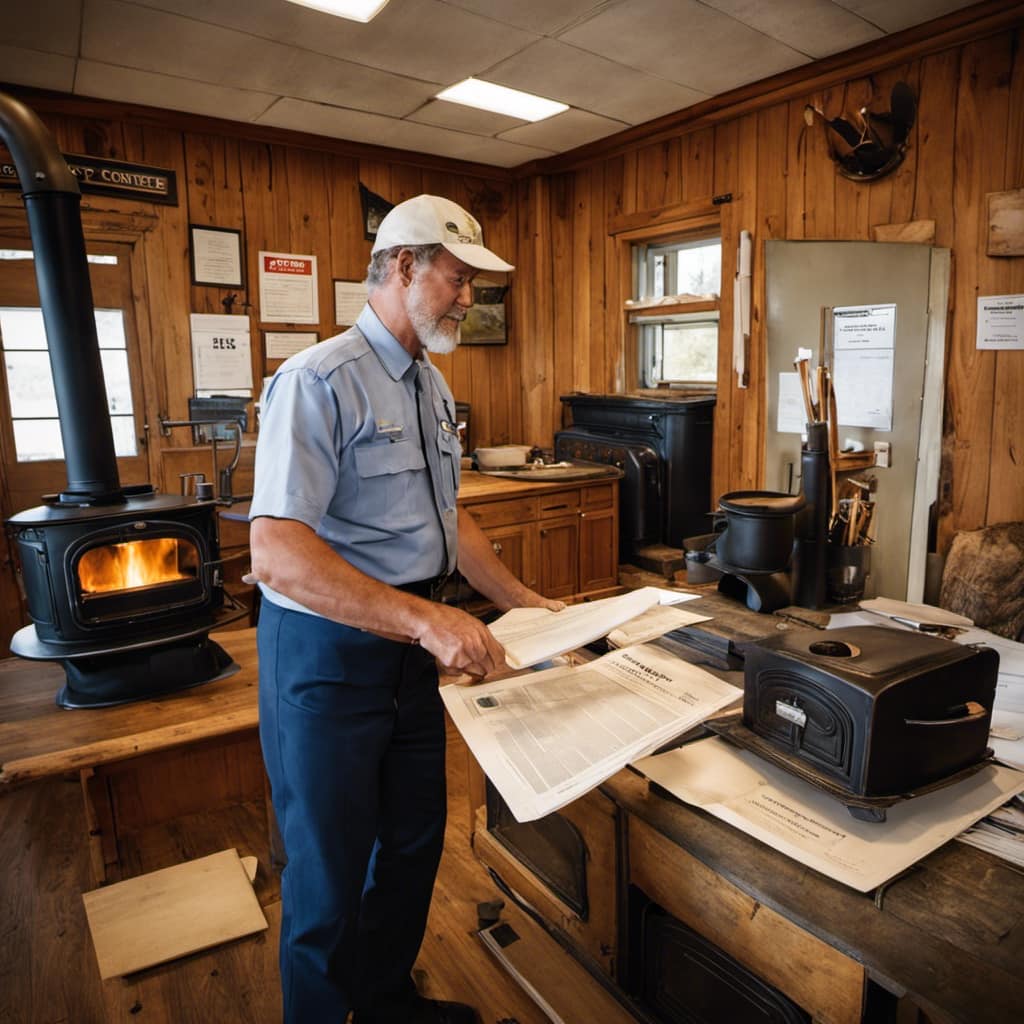
Improved Indoor Air Quality: Proper ventilation removes harmful pollutants, such as carbon monoxide and volatile organic compounds, from your home. This helps prevent respiratory issues and keeps the air fresh.
Enhanced Stove Efficiency: Adequate ventilation allows the wood stove to burn more efficiently, providing more heat while using less fuel. This can save you money on heating costs and reduce your carbon footprint.
Reduced Fire Hazards: Proper ventilation helps prevent the buildup of creosote, a highly flammable substance that can accumulate in the chimney. This reduces the risk of chimney fires.
To achieve proper ventilation, make sure your wood stove is installed correctly, maintain a clear and unobstructed chimney, and use an external air supply if available. Regularly clean and inspect your stove and chimney to ensure optimal performance.
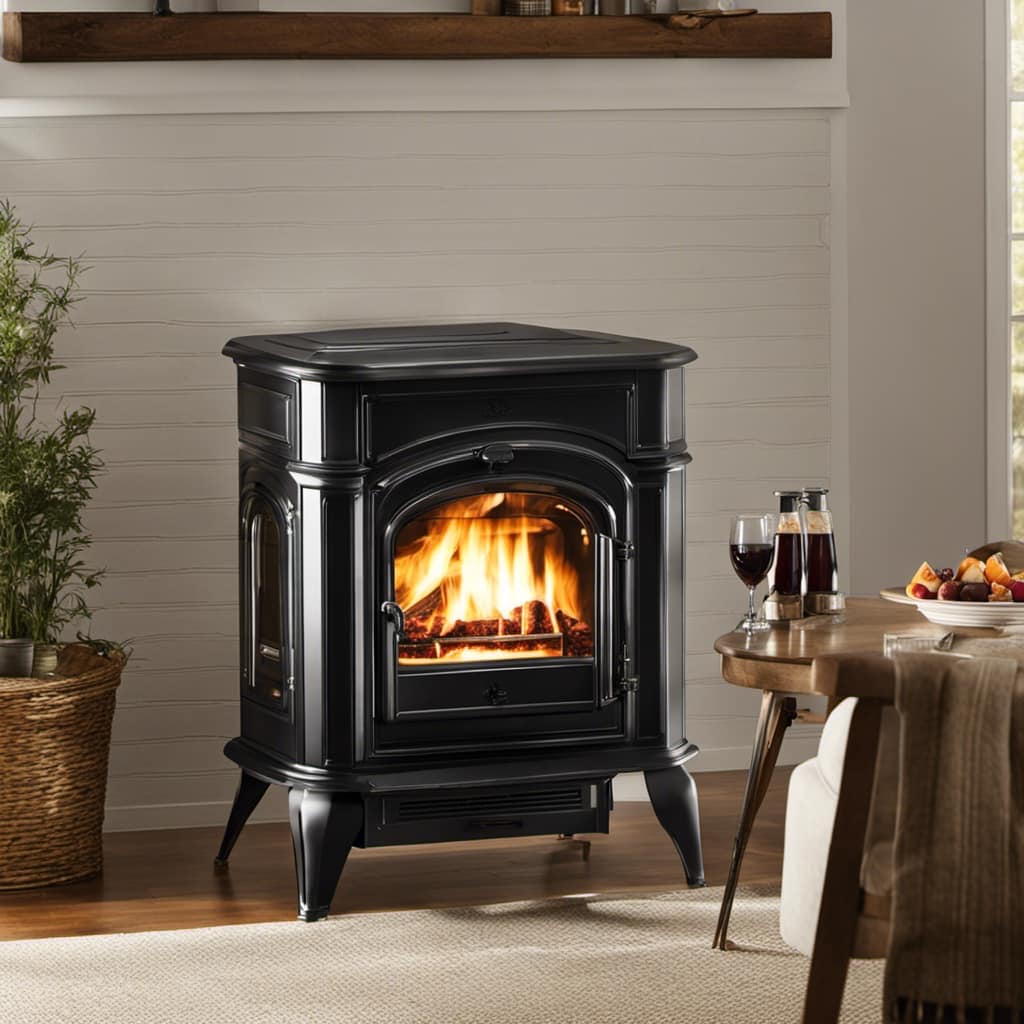
Proper Flue Maintenance
Maintaining the flue is essential for optimal performance and safety when operating a wood stove. Regular flue cleaning and chimney sweeping are crucial to keep the flue free from blockages and ensure proper airflow.
Over time, creosote, a byproduct of burning wood, can accumulate in the flue. This not only reduces the efficiency of the stove but also poses a significant fire hazard. Hiring a professional chimney sweep is recommended for thorough flue cleaning. They have the knowledge and specialized tools to remove creosote buildup and inspect the flue for any damage.
Additionally, they can provide valuable advice on how to properly maintain the flue between cleanings. By keeping the flue clean and well-maintained, you can enjoy a safer and more efficient wood stove experience.
Safety When Opening
When it comes to safety, it’s crucial to be cautious and aware of potential hazards when opening the flue on a wood stove. Here are three important things to keep in mind:
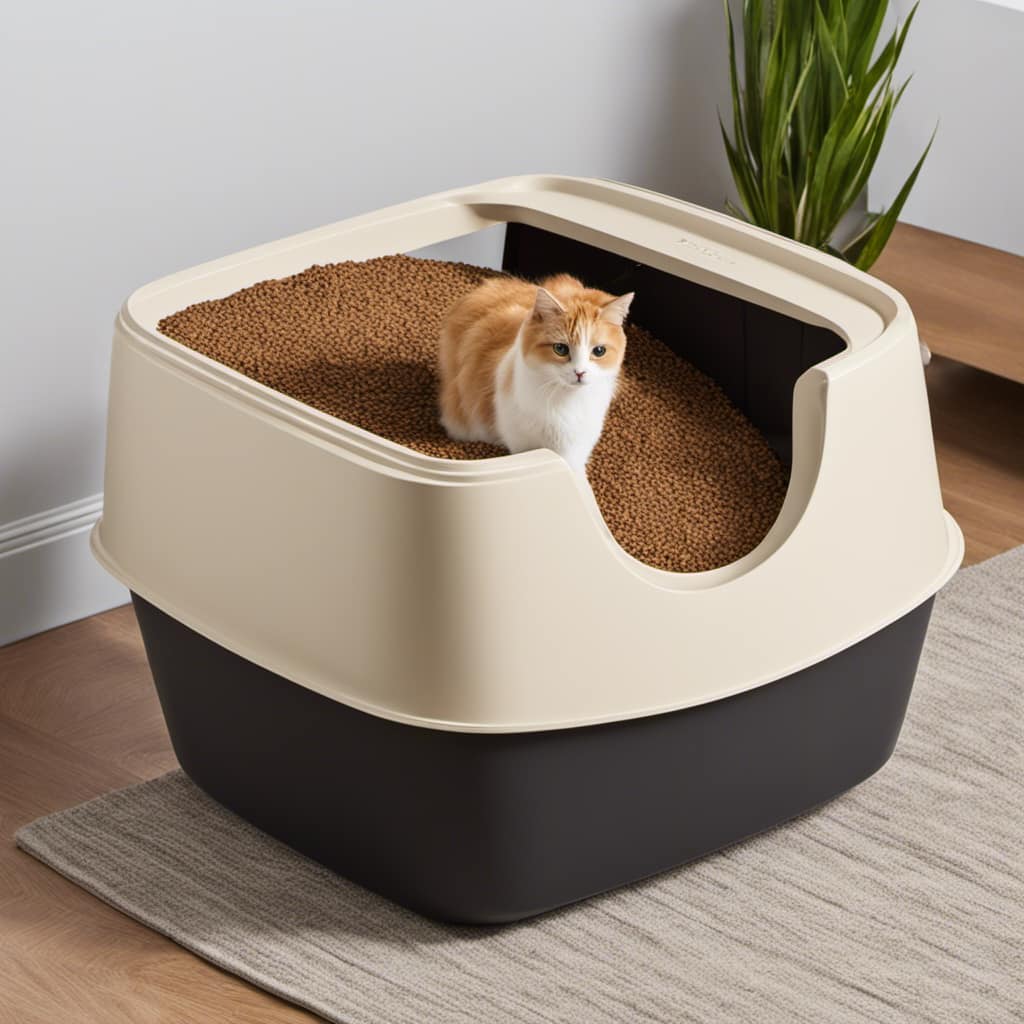
Clear the area: Before opening the flue, make sure there are no flammable materials near the stove. This includes furniture, curtains, and other combustible items. Keeping a safe distance will prevent accidental fires.
Wear protective gear: When dealing with the flue, it’s essential to protect yourself. Wear heat-resistant gloves to avoid burns from hot surfaces. Additionally, use goggles or safety glasses to shield your eyes from any debris that may fall during the process.
Check for blockages: Before opening the flue, inspect it for any obstructions, such as bird nests or debris. Clearing these blockages will ensure proper ventilation and prevent smoke from entering your living space.
Adjusting the Flue for Optimal Ventilation
To ensure proper ventilation, I need to adjust the flue on my wood stove. The flue plays a crucial role in the functioning of the stove, allowing smoke and other byproducts of combustion to safely exit the house. Regular flue maintenance is essential to keep it in good working condition and reap the benefits of a well-functioning flue.
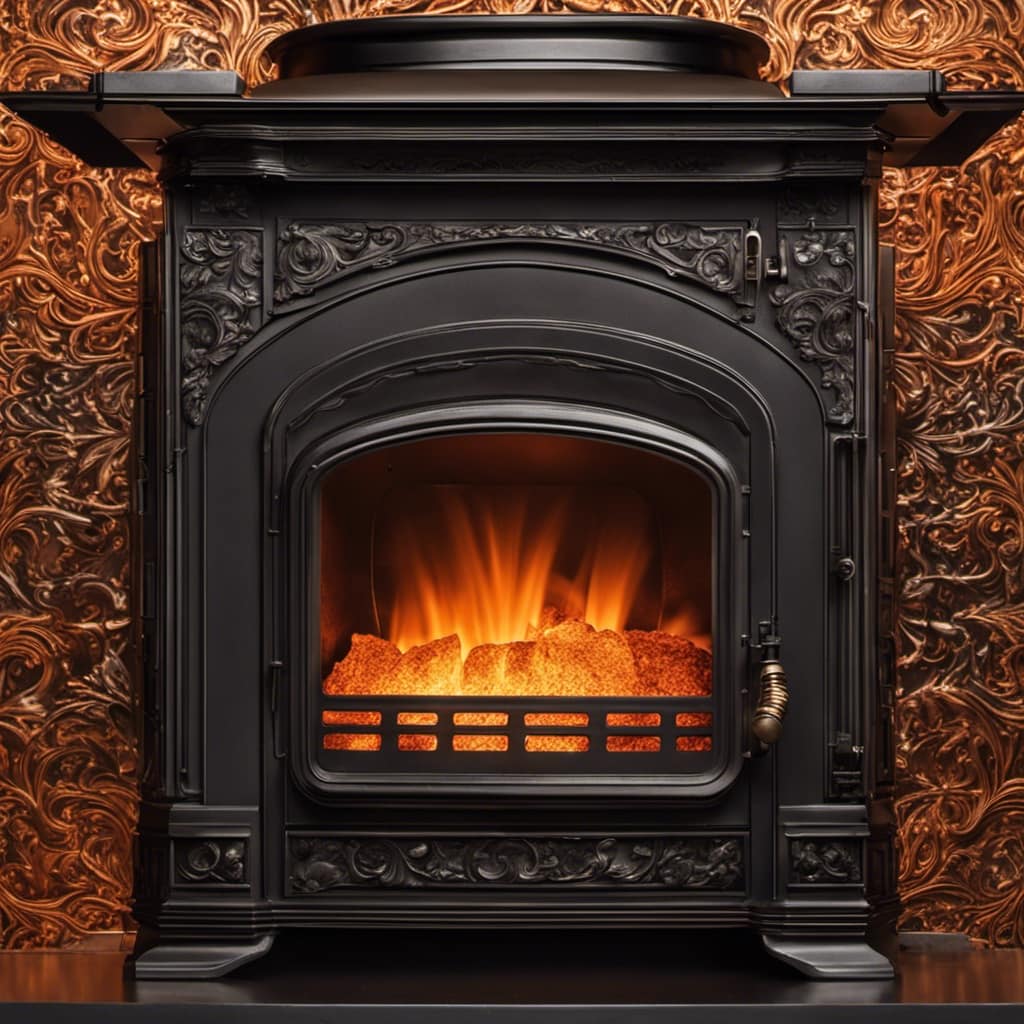
Flue maintenance tips include inspecting the flue regularly for any signs of damage or blockages, such as creosote build-up or debris. It’s important to clean the flue at least once a year to remove any accumulated soot or creosote, which can be a fire hazard. Additionally, ensuring the flue damper is fully open when starting a fire and fully closed when the stove isn’t in use helps maintain optimal ventilation.
A well-functioning flue offers several benefits. Firstly, it improves the efficiency of the wood stove by allowing for better airflow, resulting in more effective combustion and heat production. Secondly, a properly adjusted flue prevents the backup of smoke and harmful gases into the house, promoting a healthier indoor environment. Lastly, a well-maintained flue reduces the risk of chimney fires, protecting both your home and your family.
Closing the Flue: When and How to Do It
Closing the flue on a wood stove is an important step in maintaining safety and energy efficiency. Knowing when to close the flue and how to do it properly is crucial to prevent potential risks. Here are three things to keep in mind:
When to close the flue: The flue should only be closed when the fire is completely extinguished and there are no remaining embers or burning logs. Closing the flue too soon can cause smoke and harmful gases to accumulate in your home.
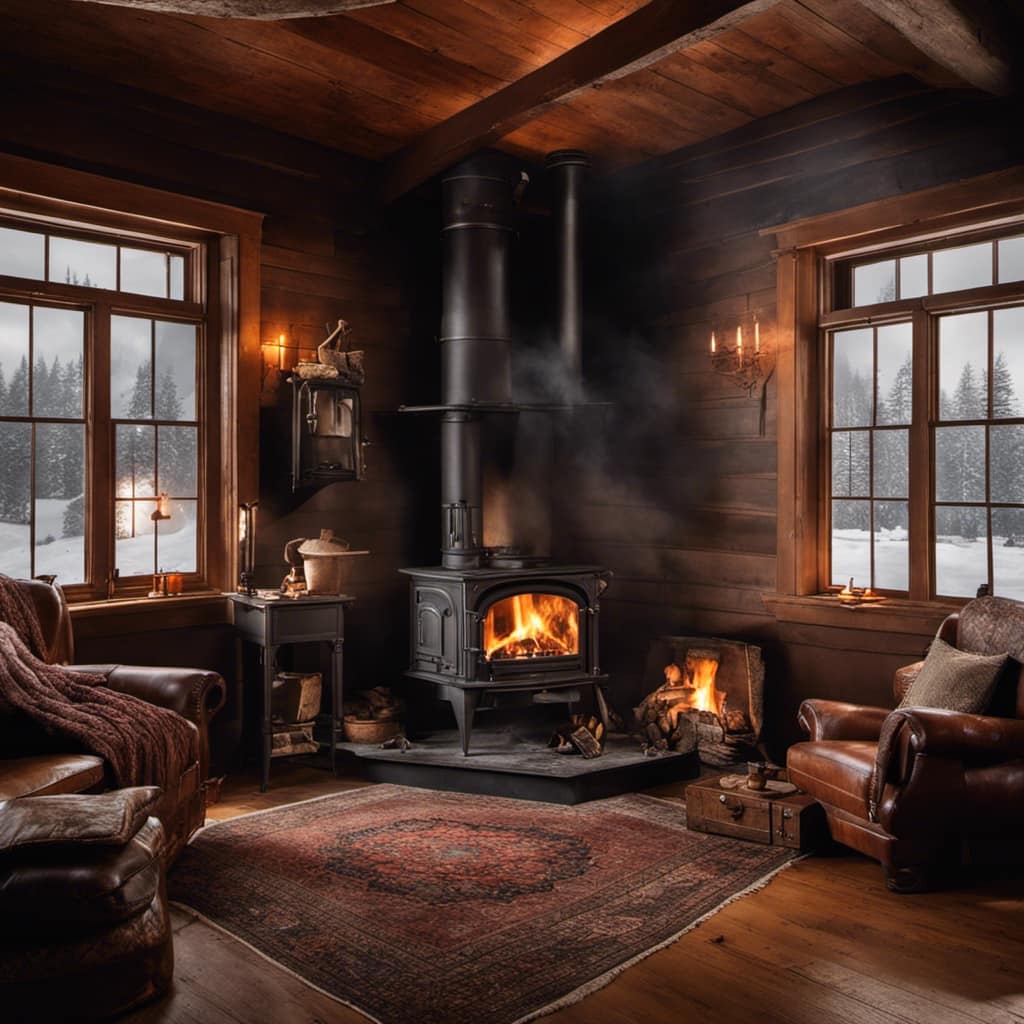
How to close the flue: Start by ensuring that the fire is fully out and the stove is cool to the touch. Locate the flue lever or handle, usually located on the front or side of the stove. Move the lever or handle to the closed position, which will seal off the chimney and prevent drafts.
Potential risks of not closing the flue: Failing to close the flue properly can lead to a variety of issues, including heat loss, increased energy consumption, and the potential for carbon monoxide poisoning. It’s essential to always double-check that the flue is closed after every use to avoid these risks.
Frequently Asked Questions
What Are the Different Types of Flue Dampers and How Do They Work?
There are several types of flue dampers that are commonly used in wood stoves. These include manual dampers, which can be controlled by a lever or knob, and automatic dampers, which adjust themselves based on the temperature inside the stove.
The main purpose of a flue damper is to regulate the airflow in the flue and ensure proper ventilation. It’s important to have a properly functioning flue damper to prevent smoke and other gases from entering the room.
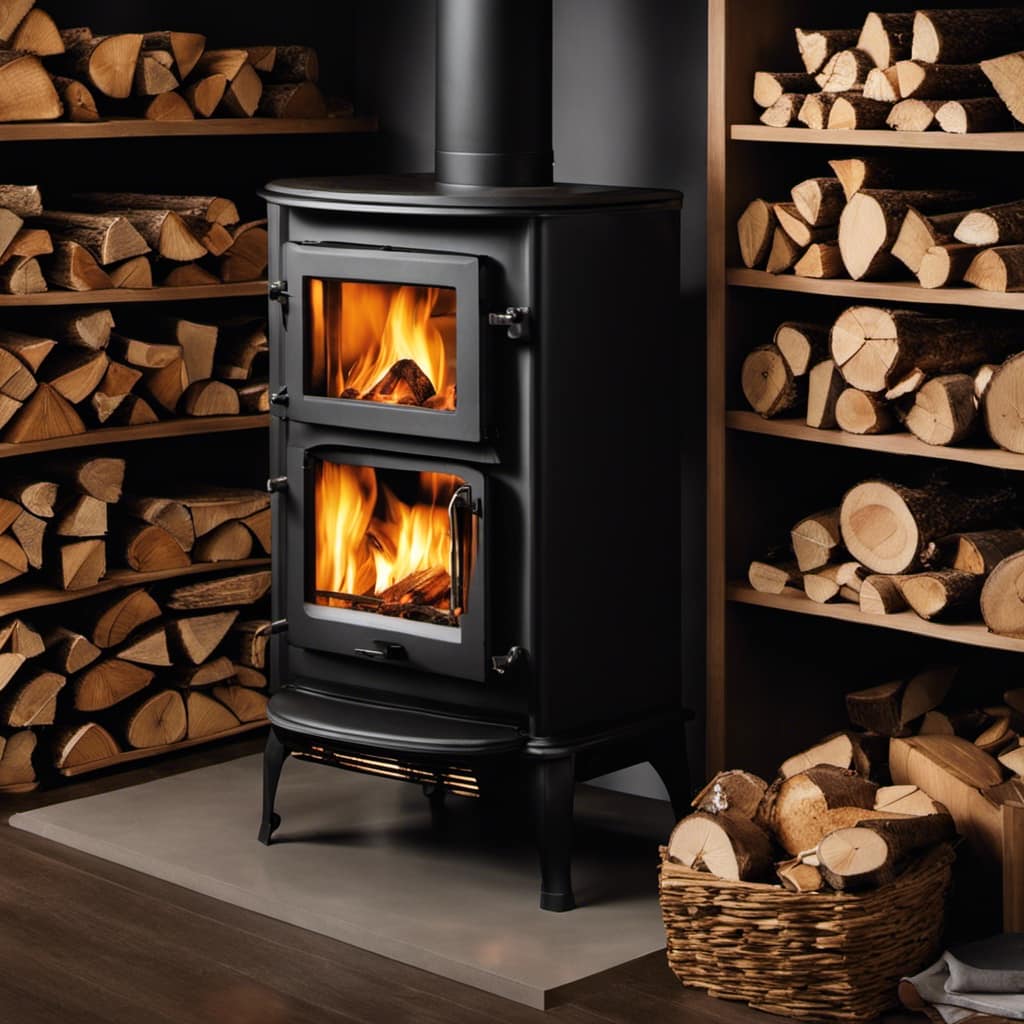
Can I Open the Flue if the Wood Stove Is Still Warm?
Sure, you can open the flue even if the wood stove is still warm. However, it’s important to take safety precautions before doing so.
One anachronism I want to highlight is the importance of wearing heat-resistant gloves to protect yourself from burns. Opening the flue allows smoke and gases to escape, preventing a buildup of harmful fumes.
Remember to carefully follow the manufacturer’s instructions and be cautious when handling any hot surfaces.
What Are the Signs of a Blocked Flue and How Can I Clear It?
To clear a blocked flue, it’s important to first recognize the signs. These can include smoke backing up into the room, a strong odor of smoke, and difficulty starting or maintaining a fire.
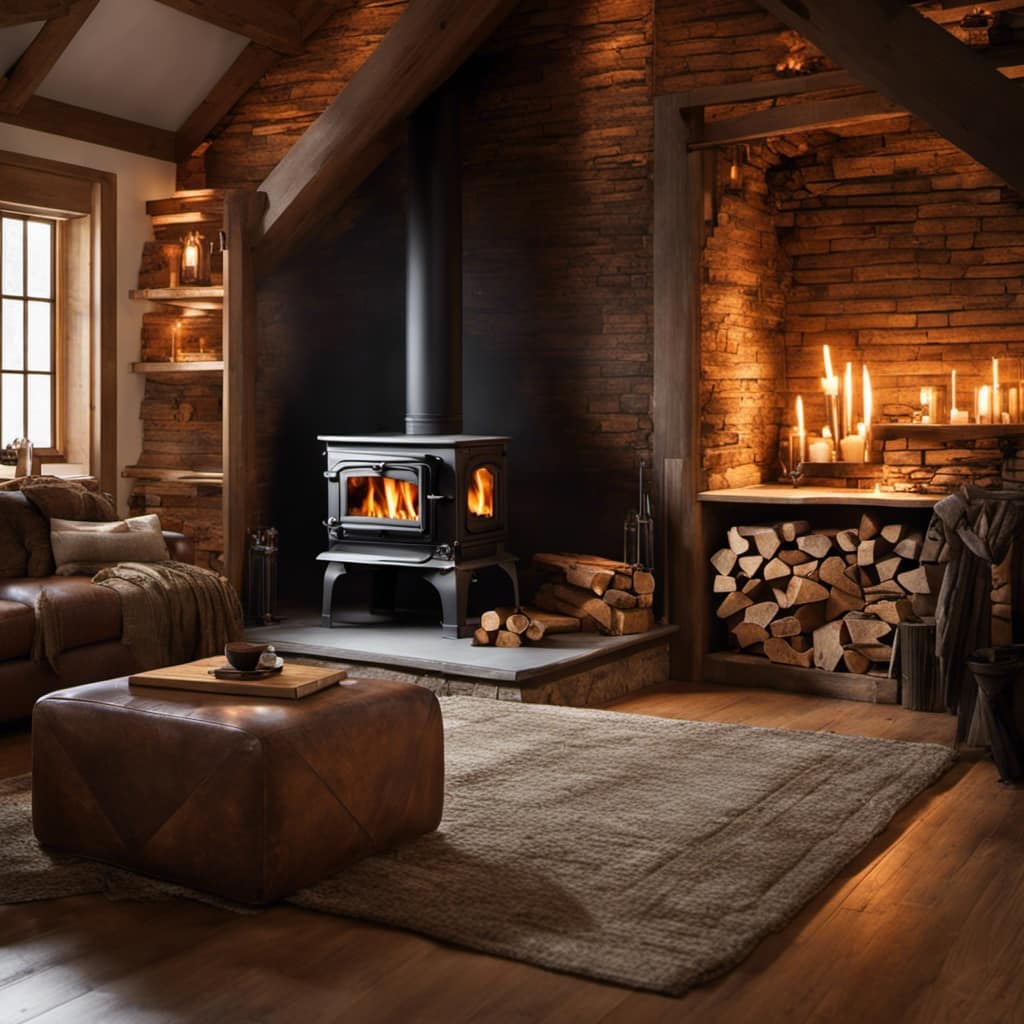
To clear the blockage, start by ensuring the damper is fully open. Then, use a chimney brush and rod to remove any debris or creosote buildup.
Regular maintenance, such as annual chimney inspections and cleanings, can help prevent future blockages.
How Often Should I Clean and Maintain the Flue?
Cleaning and maintaining the flue of a wood stove is crucial for its proper functioning and safety. The frequency of cleaning depends on how often you use the stove, but a general rule of thumb is to have it inspected and cleaned at least once a year.
Regular maintenance includes checking for any blockages or creosote buildup, ensuring proper airflow, and making sure the flue is fully open during operation.

Following these tips will help keep your wood stove running efficiently and prevent potential hazards.
Can I Use the Wood Stove Without Opening the Flue?
Using a wood stove without opening the flue is extremely dangerous and can lead to serious consequences. It’s crucial to prioritize wood stove safety and ensure proper ventilation.
The flue is responsible for removing the byproducts of combustion, such as carbon monoxide, from your home. Without proper ventilation, these harmful gases can accumulate, posing a significant health risk.
Always remember to open the flue before using your wood stove to maintain a safe and healthy environment.
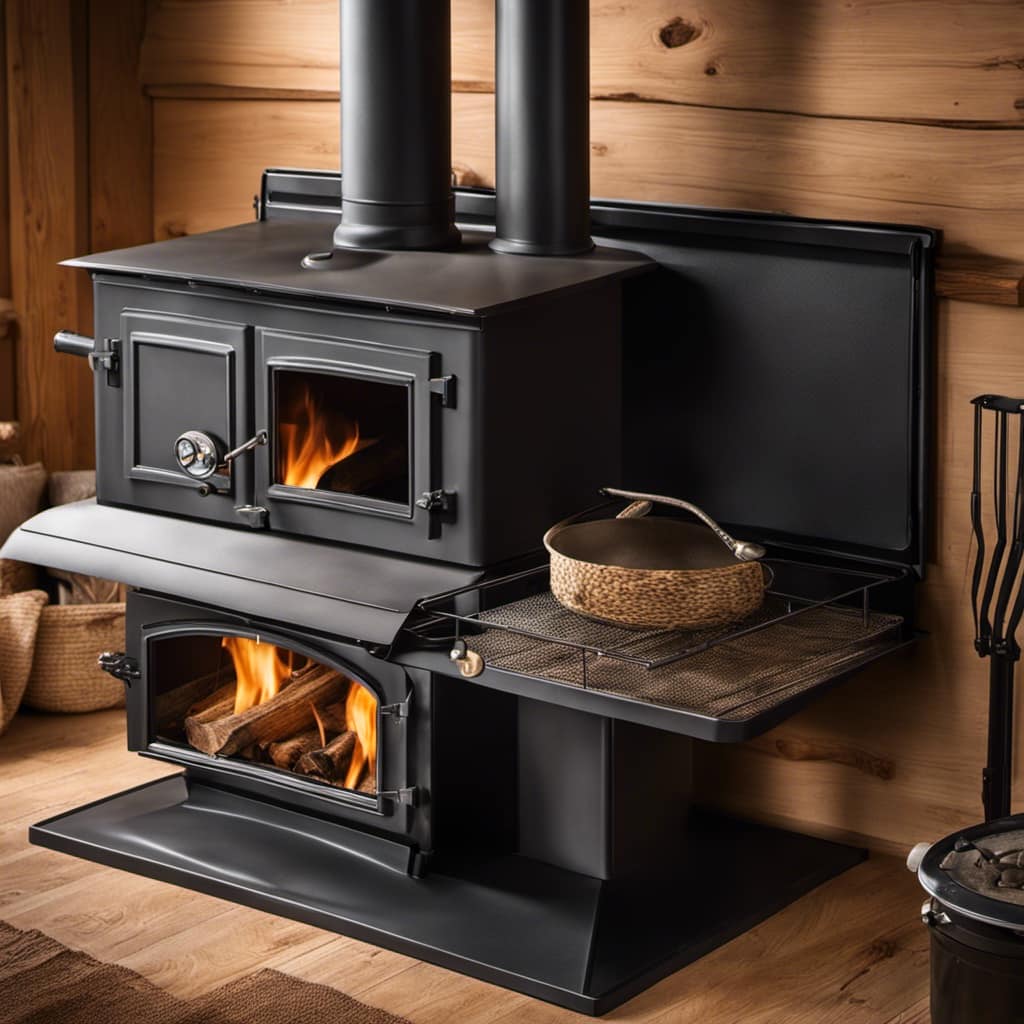
Can I Safely Open the Flue on My Wood Stove Without Knowing If It’s Already Open?
Yes, you can safely open the flue on your wood stove without knowing if it’s already open. However, it’s important to check first to ensure proper ventilation. Here are some tips for checking flue open: Look for a lever or handle on the flue, use a flashlight to inspect the flue, and listen for a rush of air when opening the flue.
Conclusion
Congratulations! You’re now a master of flue-opening techniques. With these step-by-step instructions and safety precautions, you can confidently control the ventilation in your wood stove. No more guessing games or blocked flues ruining your cozy evenings.
So go ahead, embrace your inner flue expert and enjoy a perfectly balanced fire. Just remember, with great power comes great responsibility. Use your newfound knowledge wisely and keep those flames burning safely.
Growing up surrounded by the vast beauty of nature, Sierra was always drawn to the call of the wild. While others sought the comfort of the familiar, she ventured out, embracing the unpredictable and finding stories in the heartbeat of nature.
At the epicenter of every remarkable venture lies a dynamic team—a fusion of diverse talents, visions, and passions. The essence of Best Small Wood Stoves is crafted and refined by such a trio: Sierra, Logan, and Terra. Their collective expertise has transformed the platform into a leading authority on small wood stoves, radiating warmth and knowledge in equal measure.




